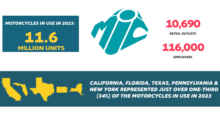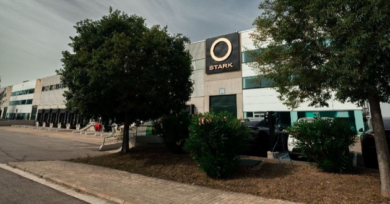Jan. 17, 2011 – A new perspective on Spyder
 Reduce fuel consumption in half. Reduce emissions by the same percentage. And do it without any performance or power loss.
Reduce fuel consumption in half. Reduce emissions by the same percentage. And do it without any performance or power loss.
Those ambitious goals are being aimed at the Spyder, BRP’s unique Y-shaped roadster.
A Canadian university has received $11.3 million in funding to create an electric hybrid roadster over the next four years. Two groups are funding the project, including BRP.
The goal of creating such a hybrid vehicle represents some major challenges due to the roadster’s size. So as a result, rather than modifying existing hybrid technology, the project’s researchers will have to design an entirely new propulsion system.
“Creating a three-wheel vehicle as opposed to a hybrid car poses significant design challenges that require a very high degree of innovation,” said Alain Desrochers, a professor at the Université de Sherbrooke, which is handling the multi-year project.
“These challenges include the lack of space to accommodate hybrid motorization, cooling problems, aerodynamics, vehicle weight, and noise. Everything must be studied and modified.”
The university will do that over the next four years, producing three generations of prototypes and their components. The aim is for the final product to pass the test in terms of performance, reliability, durability and economic mass production. Any innovations could be transferred to other types of vehicles and products.
The project — believed to be the only electric hybrid roadster development in the world — is a result of $6.2 million from the Automotive Partnership Canada program and $5.1 million from BRP.
The group that will be orchestrating the project, the Université de Sherbrooke, is a result of a partnership with BRP. The university’s mandate is to develop new, cutting-edge technologies for motorized recreational vehicles. Since it opened in 2006, the university has developed two technologies that have been integrated into BRP products: a technology used in manufacturing the hulls of the new generation of Sea-Doo watercraft, and the five-speed semi-automatic transmission available on the Spyder roadsters. The CTA currently employs more than 70 researchers and students, and expects to become self-financing as of this year.
“By deciding to establish R&D centers, BRP confirmed its commitment to accelerate the development of cleaner and more efficient new technologies,” José Boisjoli, BRP’s president and CEO, said in a press release. “The powertrain technologies used in our snowmobiles, side-by-side vehicles and outboard engines are already the best in the industry in terms of fuel consumption, and are milestones toward our goal of providing consumers with increasingly eco-performing technology.”
Besides possibly providing a new power plant to the Spyder, the project could result in another benefit. University principal Luce Samoisette said. “Without a doubt this applied research project will produce a skilled new generation of engineers and have a significant impact on several levels.” PSB








